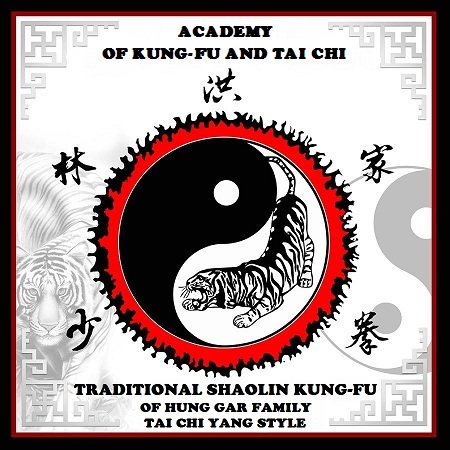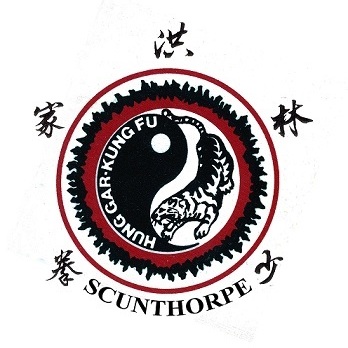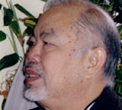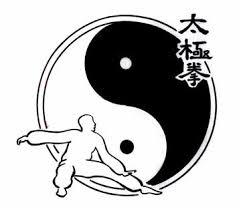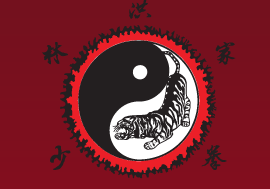
SCUNTHORPE ASSOCIATION
OF KUNG-FU & TAI-CHI
TRADITIONAL SHAOLIN KUNG-FU
OF HUNG GAR FAMILY
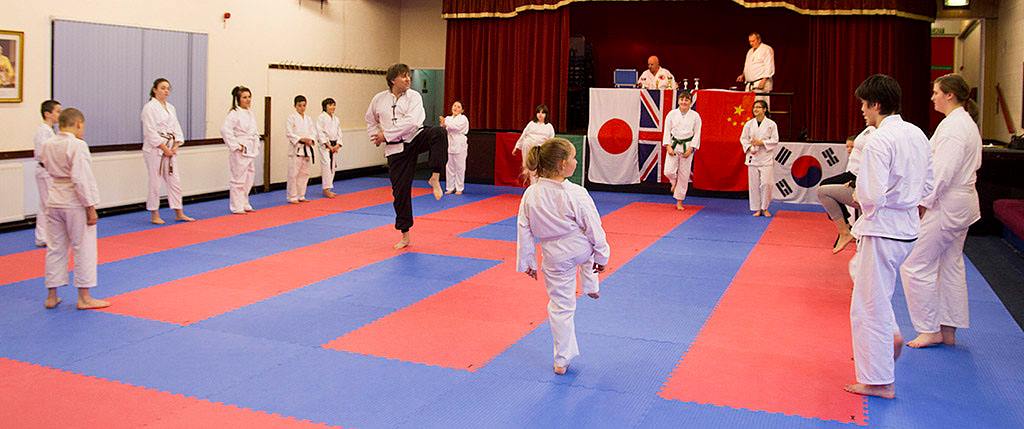

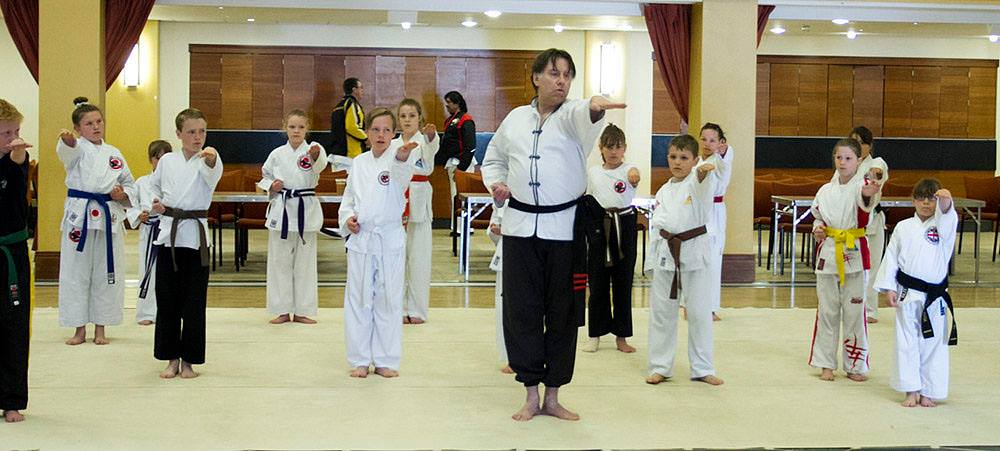
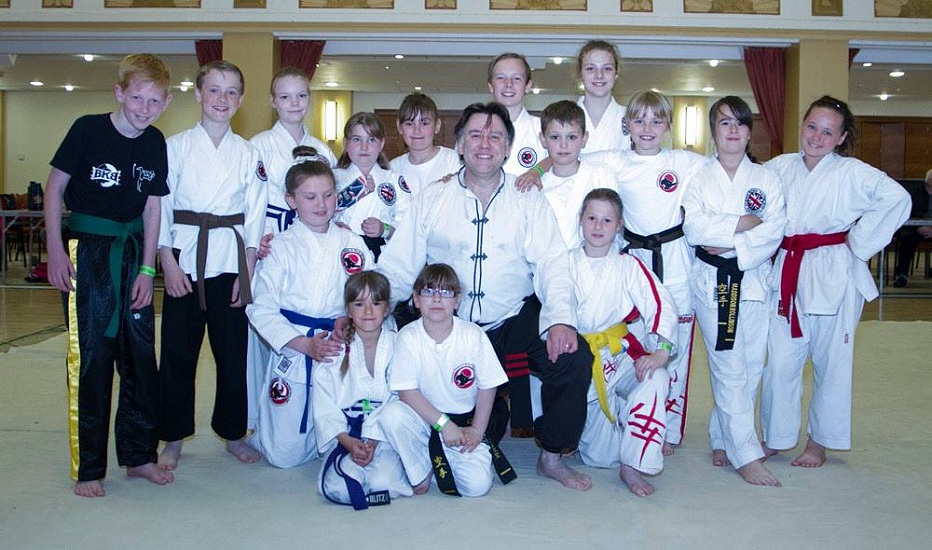
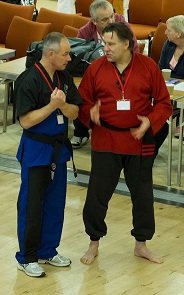
WEAPONS
Mofa or the work of weapons:
For a long time, the work of weapons is an integral part of the study of the traditional Martial arts. The study of the manipulation of weapons allows the apprentice to develop the notion of the space and of time but especially to develop the emotional side (the fear of being in front of a blunt or cutting object and the fear of remaining paralyzed). Weapons are an essential part of the training and the transmission of a teaching. The capacity to fall beyond the body and the capacity of anticipation which ensues from it are the guarantee of a success in the field of the Martial art.
Within the framework of the school Siu Lam Hung-Gar Khin, we develop the study in a traditional and progressive way by beginning with the manipulation of the stick (Long staff) which is as much a weapon as a tool. By this first understanding, we can differentiate between the weapon instrument of death and the tool as instrument serving us to defend ourself and thus serving to extend the life. It belongs to the apprentice to decide by which way he undertakes. Weapons give and teach to the studiant the responsibility for taking and for assuming its own decisions. We will describe here the four main weapons we study in the school.
Bo Staff:
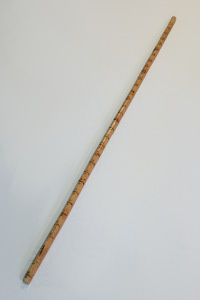
The bo, or staff, is probably one of the first weapons that mankind used to defend himself. The history of the bo dates back millennia, and is thought to be used first in China. It could easily be found, was easy to handle, and could be used for multiple purposes. The bo staff itself is believed to have been developed from the tenbin, a pole balanced on the shoulders, used to carry buckets hanging from each end with water or grain.
The bo is a well known weapon used in many styles of martial arts practiced around the world. It is one of the five weapons included into a style by the early Okinawan founders of karate. In feudal Japan, it was part of the bugei - early Japanese martial arts. Nobles and peasants used it in a similar way.Although the bo varies in size and length, all staffs are long pieces of well polished wood, best described as a pole. Thickness of the bo varies depending on the particular martial art one trains in. Though, it must be made so that the fighter can comfortably make a tight fist around it in order to block and counter an attack. The length of the bo also depends on the style of the martial art, however the most common length is a few inches taller than the practitioner. Its length makes it an excellent weapon against swordsmen, allowing the user to strike from a safe distance.
In a fight, the bo staff acts as an extension of one's limbs. All techniques are executed as one would without the weapon in your hands. An accurate jab to an enemy's vulnerable areas could easily disable them without requiring too much effort from the person using the staff. The bo is also able to block and parry an opponent who may be fighting with the same weapon. Other tricks that one can use this weapon for include sweeping the legs out from underneath an opponent, breaking the knees, and sweeping dust into the opponent's eyes.
It is easy to find a good staff in a time of need. A good stick can be found almost anywhere at nearly all times. Now part of martial way, the bo is often used in kuen training and competition. Physical conditioning with the staff improves one’s balance, coordination, and upper body strength, among other benefits.
The basic purpose of the staff is increasing the force delivered in a strike, through leverage, and to benefit from the extra distance this weapon affords. The user's relatively slight motion, effected at the point of handling the staff, results in a faster, more forceful motion by the tip of the staff against the object or subject of the blow; thus enabling long-range crushing and sweeping strikes. The staff may also be thrust at an opponent, allowing one to hit from a distance. It also is used for joint-locks, thrusting of the staff that immobilize a target joint, which are used to non-fatally subdue an opponent. The staff is a weapon mainly used for self-defense, and can be used to execute several blocks and parries. Martial arts techniques, such as kicks and blocks, can also be combined with weapon techniques when practicing this martial art to enhance its effectiveness.
Shaolin Kung Fu and Chinese Martial Arts has 4 basic weapons: The staff, the broadsword, the spear, and the straight sword. The Staff is known as The Father of All Weapons
There were of course many staff types as there are different woods, people and ways of using. But in general most staffed weapons can be cut into 5 specific sizes (general lengths - all Shaolin weapon dimensions were measured in 'natural' measurements relating to the user);
Dragon Staff (app 1½ person lengths or 8 to 9 foot) Shaolin Staff (app 1 person length or 5½ to 6½ foot «also Rat Tail Staff, very flexible, Bai La Wood ») Carry Staff (app ¾ person length) Cudgel or Walking Stick (app half person length and very stout)
Broadswords:
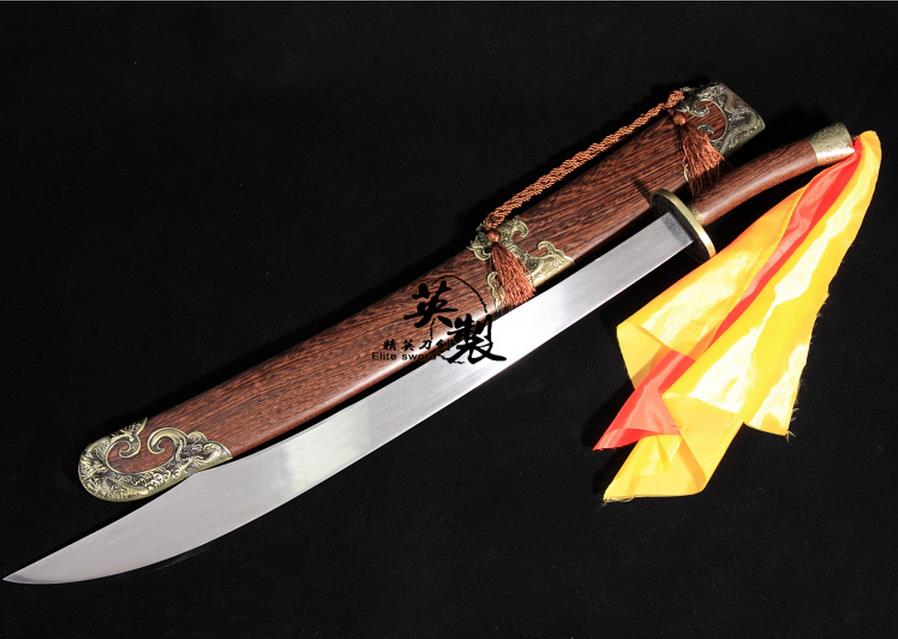
In China, the dao is known as one of the four major weapons, along with the spear, staff, and the sword, and referred to as "The Courage of All Soldiers". The Chinese broadsword, one of the most common and popular weapons developed in China, makes numerous appearances in the country’s history and legends. TSANG HER is the God directly associated with the broadsword. The name TSANG HER means 'arrives and kills whatever it touches.' This nickname gives a good indication of the great military power associated with the sabre.
While dao have varied greatly over the centuries, most single-handed dao of the Ming period and later, and the modern swords that are based (sometimes loosely) on them share a number of characteristics. Dao blades are moderately curved and single-edged, though often with few inches of the back edge sharpened as well; the moderate curve allows them to be reasonably effective in the thrust. The blood groove, an indentation on either side of the blade, was used to break the suction so that the broadsword could easily be withdrawn from the enemy’s body. Hilts are canted, curving in the opposite direction as the blade which improves handling in some forms of cuts and thrusts. Cord is usually wrapped over the wood of the handle. Hilts may also be pierced like those of jian (straight-bladed Chinese sword) for the addition of lanyards, though modern swords for performances will often have tassels or scarves instead. Guards are typically disc-shaped often with a cupped shape to prevent rainwater from getting into the sheath, and to prevent blood from dripping down to the handle, making it more difficult to grip.
Most Chinese martial arts schools still train extensively with the dao, seeing it as a powerful conditioning tool and a versatile weapon, with self defense techniques transferable to similarly sized objects more commonly found in the modern world, such as baseball or cricket bats, for example.
One measure of the proper length of the sword should be from the hilt in your hand and the tip of the blade at the brow and in some schools, the height of shoulder. Alternatively, the length of the sword should be from the middle of the throat along the length of the outstretched arm. There are also significantly larger versions of dao used for training in some Baguazhang and Taijiquan schools.
Butterfly swords:
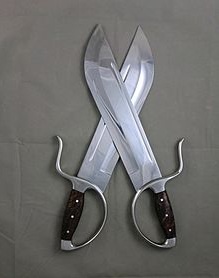
Hudiedao, wu dip do, bat cham do, shuang dao, double short broadswords, butterfly swords……These weapons are known by literally dozens of different names in the various styles and lineages of the southern Chinese martial arts. These schools can also be very particular about the exact knives that they favor. Nevertheless, all of these weapons seem to follow the same basic guidelines.
No weapon is more closely linked to the martial heritage of southern China than the hudiedao, commonly referred to in English as « butterfly swords. » In the hands of Wing Chun practitioners such as Bruce Lee and Ip Man, these blades became both a symbol of martial attainment and a source of regional pride for a generation of young martial artists. Nor are these blades restricted to a single style. Choy Li Fut, Hung Gar, Lau Gar and White Crane (among numerous others) all have lineages that employ this weapon. It is a widespread and distinctive cultural marker of the southern Chinese martial arts.
This is not to say that hudiedaos are not occasionally seen in other places. They have been carried across China (and Asia) by the adventurous people of Guangdong and Fujian. There are also a number of other fighting traditions which focus on paired swords, daggers or maces that are very reminiscent of the butterfly swords of southern China. Still, there are distinctive elements of this regional tradition that make it both easily identifiable and interesting to study.
Hudiedao: Understanding the basic history of the butterfly sword. The monks of the Shaolin Temple have left an indelible mark on the martial arts of Guangdong and Fujian. This mark is none the less permanent given the fact that the majority of Chinese martial studies scholars have concluded that the “Southern Shaolin Temple” was a myth. Still, myths reflect important social values. Shaolin (as a symbol) has touched many aspects of the southern Chinese martial arts, including its weapons.
In Wing Chun Schools today, it is usually assumed that the art’s pole form came from Jee Shim (the former abbot of the destroyed Shaolin sanctuary), and that the swords must have came from the Red Boat Opera or possibly Ng Moy (a nun and another survivor of temple). A rich body of lore linking the hudiedao to Shaolin has grown over the years. These myths often start out by apologizing for the fact that these monks are carrying weapons at all, as this is a clear (and very serious) breach of monastic law.
It is frequently asserted that our monks needed protection on the road from highwaymen, especially when they were carrying payments of alms. Some assert that butterfly swords were the only bladed weapons that the monks were allowed to carry because they were not as deadly as a regular dao. The tips could be left blunt and the bottom half of the blade was often unsharpened.
Straight sword or Tai Chi Swords
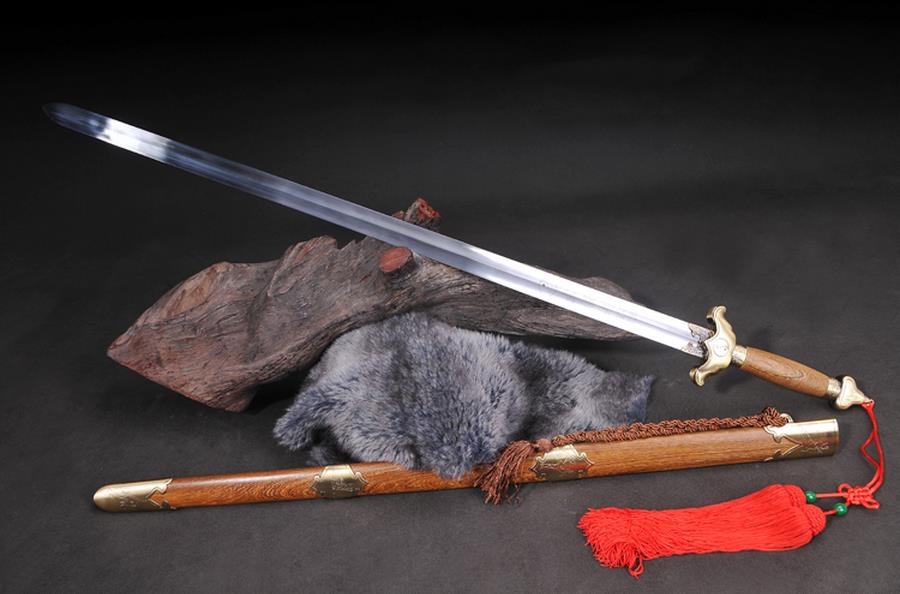
Jian is a double-edged straight sword used during the last 2,500 years in China. Although the early origins of the weapon probably emerged in North China, this imminently classical weapon is popular throughout China. Thus most of its major techniques are shared by diverse styles. Many Chinese martial arts, such as Taijiquan for one well-known example, still train extensively with jian, and expertise in its technique is said by many of them to be the highest physical expression of their martial skills. The jian is very often the weapon of the hero in Chinese martial arts movies. In folklore, it is known as "The Gentleman of Weapons" and is considered one of the four major weapons, along with the staff, saber, and the spear. The straight-bladed jian became known as a weapon of the aristocracy, high-ranking military officers, professional martial artists and the wealthy for personal defense, training, ceremony, and prestigious decoration.
Swords may have either a straight blade or a curved one. A straight sword was primarily intended for hacking and stabbing, whilst a curved sword was better at slashing. The difference between a hacking cut and a slashing one is essentially the same as the difference between using a butcher's knife and a chef's knife; one forces an edge straight into a material while the other is pulled along the material to get more of a slicing action. Expertise with this weapon is still built around the basic straight sword techniques of poking, flicking, stabbing, dragging, short-cutting, guiding, and adhering with extremely focused power.
Historical one-handed versions have blades varying from 17.7 to 31.5 inches in length. The weight of an average sword of 28 inch blade-length would be in a range of approximately 1.5 to 2 pounds. There are also larger two-handed versions used for training by many styles of Chinese martial arts.
Twin Straight Swords (Shuang Jian) are two mirror-image weapons, one held in each hand. In modern kungfu, the practice of twin weapons balances out the left hand with the right, since many styles have a predetermined dominance.
